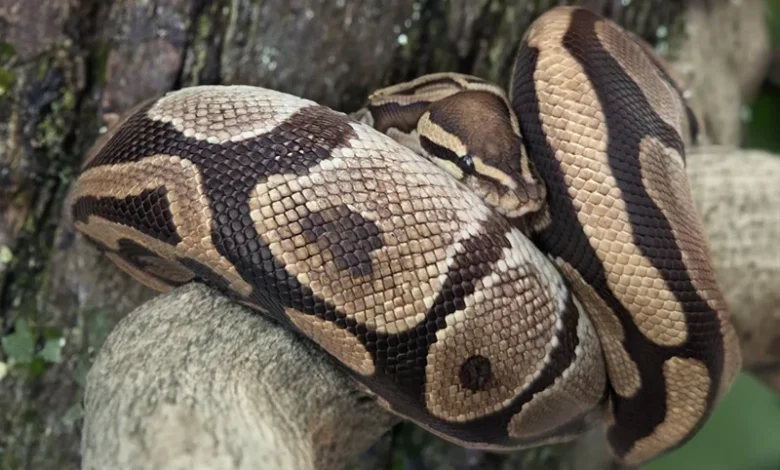Tete-Chien (Boa Constrictor)

The Tete-Chien, or Clouded Boa Constrictor (Boa nebulosa), is the largest snake species in Dominica and is found only on the island. Also known as the Dominican Boa Constrictor, this remarkable species plays a key role in Dominica’s Biodiversity and thrives in habitats ranging from woodland and montane forests to scrublands and vegetated cliffs. Though occasionally seen near the edges of bananas fields, the Tete-Chien primarily inhabits the island’s dense rainforests, including protected areas like the Northern Forest Reserve and Morne Trois Pitons National Park.
Tete-Chien Characteristics and Behavior
Adult Clouded Boas (Tete-Chien) can reach lengths of over 10 feet and are easily identified by their colouration, which ranges from tan to dark brown with distinct saddle patches—between 23 to 35 in number—that often resemble nebula patterns, hence the species’ Latin name, “nebulosa.” The saddle pattern appears more washed-out along the body but remains vivid near the tail. Younger boas exhibit brighter patterns, which may fade as they mature. These boas are mainly nocturnal and somewhat arboreal, spending most nights in trees and sheltering during the day in rock piles, hollow logs, or tree roots.
Ecology and Diet
The Clouded Boa is an essential predator in Dominica’s ecosystems, helping control populations of small vertebrates such as rats, bats, agoutis, iguanas, and even chickens. Their dietary habits support biodiversity by maintaining a balanced food web in Dominica’s Rainforests and contributing to pest control, particularly in agricultural areas. Some researchers have observed Tete-Chien in pairs, likely during the breeding season, as this species typically gives birth to live young.
Conservation and Threats
Although listed as a species of least concern on the IUCN Red List, the Clouded Boa faces habitat destruction and climate change threats. The Forestry, Wildlife & Parks Division under the Ministry of Environment monitors this species to ensure its survival. Despite limited natural predators, Clouded Boas sometimes fall victim to human threats, such as car collisions and hunting for medicinal oil. Conservation programs like the National Forest Policy aim to protect the boa’s habitats, supported by eco-tourism initiatives that promote awareness of Dominica’s unique wildlife.
Role in Eco-Tourism
The Tete-Chien attracts interest from eco-tourists and wildlife enthusiasts. Guided rainforest tours offer opportunities to spot these impressive snakes, contributing to Wildlifeand Adventure Tourism. The Discover Dominica Authority and the Ministry of Tourism emphasize sustainable tourism practices to protect these snakes and their habitats while enhancing visitor experiences in Dominica’s rainforests.




